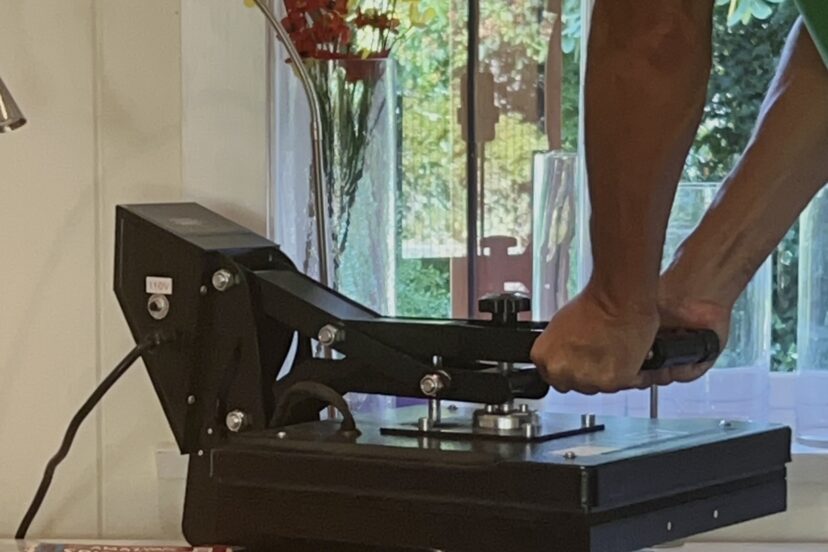How to press comics DIY
Introduction
Comic book collecting has evolved into a passionate and thriving hobby, captivating enthusiasts of all ages. Whether you are a seasoned collector or just starting, maintaining the condition of your comic books is crucial for their long-term value. Comic book pressing is a popular technique used to enhance and preserve the condition of comics, but it does not have to be a complicated and costly process. In this article, we will explore how easy it is for a comic collector to press comics, empowering them to take control of their collection’s condition and value.
What is Comic Book Pressing?
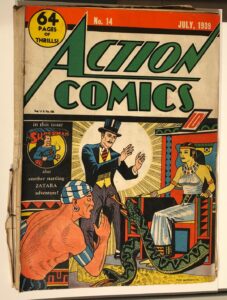
Comic book pressing is a non-invasive technique that involves applying controlled heat and pressure to a comic book to remove minor defects and imperfections, such as spine rolls, creases, and dents. The goal is to improve the overall appearance and grade of the comic, potentially increasing its value in the collectors’ market. Learning to press comics does take some practice and a small investment, but is a fun and rewarding experience!
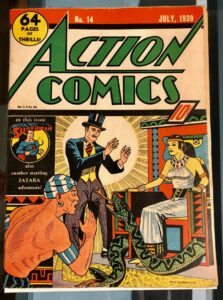
Required equipment to press comics
There are many opinions on which materials should be used when pressing comics, this is a basic list of affordable items that will get the job done beautifully, We have included our Amazon affiliate links to the products listed for your benefit:
- Smooth high grade inkjet paper: These are used to protect the comic book during the pressing process.
- Two smooth, flat surfaces: You can use High Grade Comic Backing boards to sandwich the comic book. A third backing board should always be placed in the centrefold of the book to prevent damage to the staples or staple holes
- A dry mount press. Used to heat the comic while applying pressure to soften the paper fibres and flatten out defects. NOTE: SEE our 2023 Dry Mount Comic Press review for our suggestions.
- Comic Cleaning kit. basic erasers and eraser guides to enable comic cleaning and prep.
- Apparatus to apply pressure while the comic is cooling
Comic book pressing should be approached with caution and delicacy. The process involves applying heat to the comic book to soften the paper fibres, making them more receptive to reshaping. When sandwiched between two flat surfaces and subjected to light pressure, the paper fibres align, reducing minor defects and creases.
Begin with Test Books
It is quite common to encounter some mishaps in the early pressing experimentation. We will try to minimize that from happening by giving you a step-by-step process. Regardless, please start your pressing on books that have little or no value just to be safe. Once you feel confidence in your pressing, then move on to the better books.
The Basic Pressing Steps to press comics
- Clean the book. Using an exceptionally soft eraser or erasing bag GENTLY clean soiled areas using ULTRA light pressure. Ink can be very easily removed during this process, so we recommend only cleaning the white areas on the book in the initial stages of learning. The eraser guides will help cleaning close to the ink without removing color.
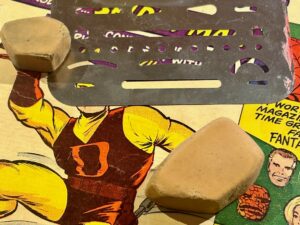
- Heavy creasing or pencil/pen imprint: We have all seen the result of someone writing or drawing on a piece of paper that was on top of a comic book. Those deep, fine imprint lines that look impossible to remove. Sad news is most often even heavy pressing will not get rid of them. Good news is that spot pressing and some fancy work can remove or severely minimize those lines. The cover should be open face down on a hardboard (comic backing board works well), Working with a tacking iron from the back side of the cover gently work those raised lines back down flat where they belong. Then proceed to regular pressing in the heat press for a much sharper looking book!


- Prep the book for pressing: Prep the pressing stack in this order from bottom to top:
- Backing board (larger than comic being pressed)
- Inkjet paper
- Comic book (with backing board inside the centrefold)
- Inkjet paper
- Backing board
-
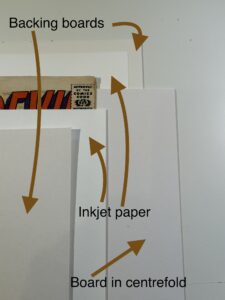
Stack Order
- Get the heat press ready. Most pressing involves heat range from 150-180 degrees Fahrenheit, start low to be safe. wait until the press has been at operating temperature for 20 minutes or so to allow heat to achieve uniformity across the element.
- Time to press comics! The second variable in pressing is the pressure applied during heating. Much like the temperature, start off gentle. the press should require some effort, we recommend not more pressure than someone could exert by closing the press with one hand modestly. The third variable is the amount of time in the heat press. We recommend three minutes a side before removing the book. There are many different opinions on this part, some pressers like longer time on only one side, which avoids the cumbersome flipping of the book stack. This is also a good method TIP: Always face the spine of the book towards the back/hinge area of the press. as soome presses tend towalk the heating area slightly forward while closing it is possible to stress or even pop the staples if the spine is facing towards the “open ” side of the press
- Cooling the book: No matter how the book is heated it needs high pressure cooling over a lengthy period of time. We use one inch thick very flat hardwood boards with somewhere between 25-50 pounds pressure for minimum on full day. One of the best ways of cooling if you do not mind occupying your press is simply turn off the heat on the press at the end of the heating stage and leave the book inside the press to gradually cool for a couple of days.
-

Two flat boards with weight source
Preventative Measures
To preserve your comic books’ condition and minimize the need for pressing, take preventive measures:
- Storage: Store your comics in archival-grade bags with acid-free boards to protect them from dust, humidity, and light exposure.
- Handling: Always handle your comic books with clean, dry hands and avoid excessive bending or folding.
- Environment: Keep your collection in a stable environment with controlled temperature and humidity to prevent paper deterioration.
Conclusion
Learning to press comics can be an easy and rewarding process for collectors looking to improve the condition and value of their comics. By understanding the basics of pressing, starting with test books, and using the right materials, comic enthusiasts can take control of their collection’s condition and preserve its long-term value. Remember, patience and precision are the keys to success, and if done correctly, pressing can elevate your comic book collecting experience to new heights.

